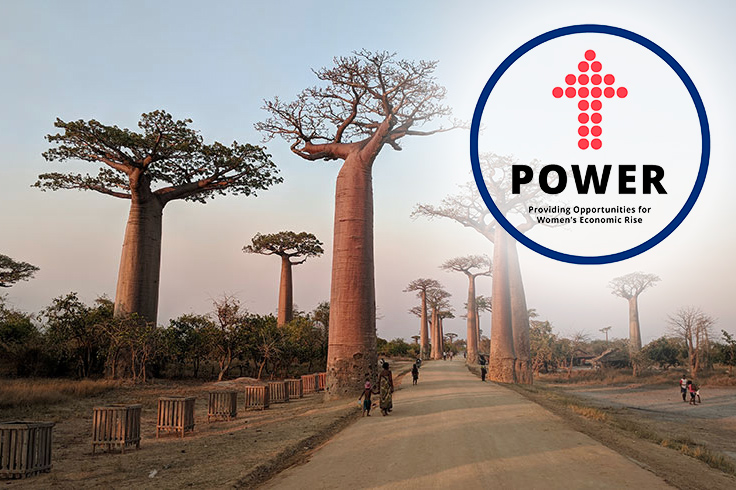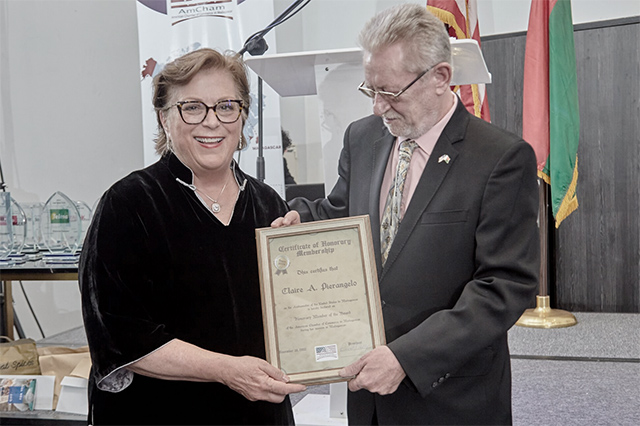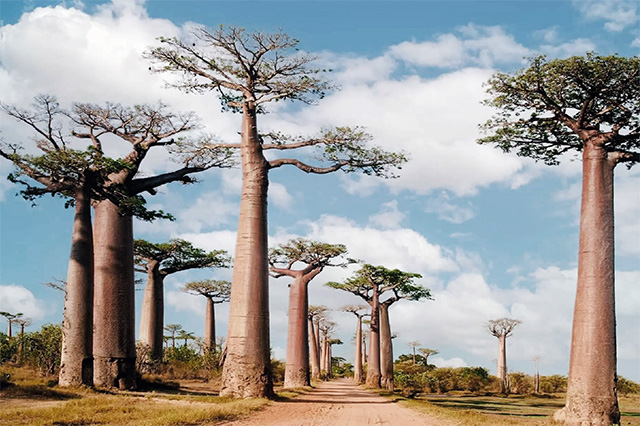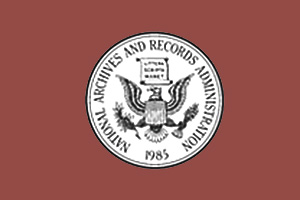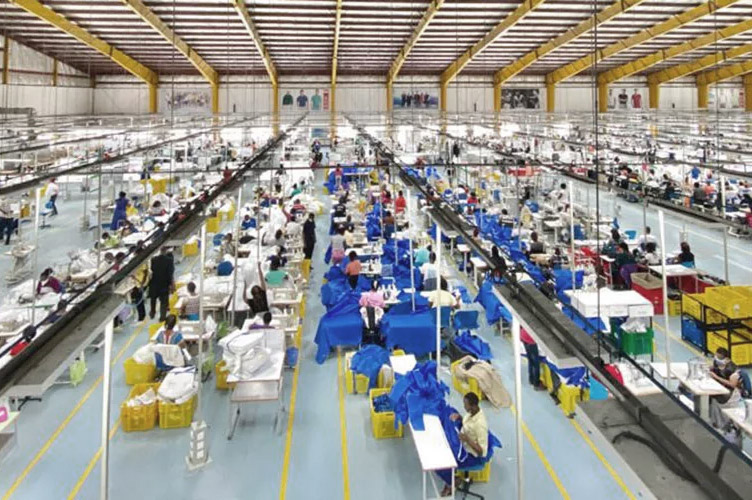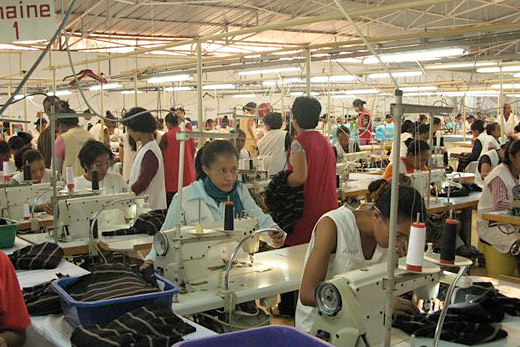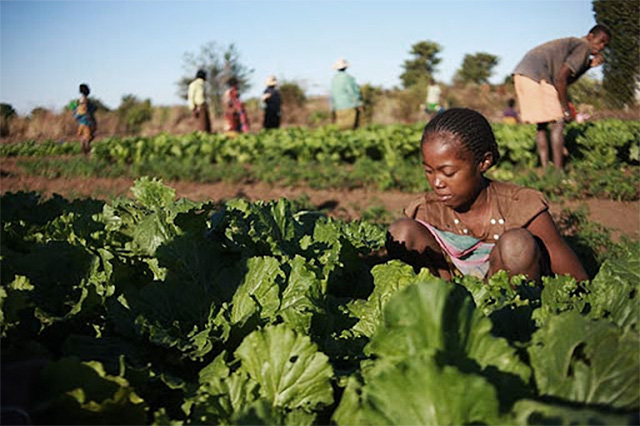Madagascar may be more than a few steps ahead of Ethiopia for sourcing
Madagascar may not be getting the same publicity as Ethiopia when it comes to the topic of sourcing in Africa, but the island nation off the southeast coast of the continent has a lot to offer that few are talking about.
One thing that sets the nation apart for sourcing is its history in textile manufacturing. Madagascar had already been a go-to source for making apparel in Africa before a coup in 2009 saw the country lose its trade benefits under the African Growth and Opportunity Act (AGOA).
But its trade privileges under the preference program were reinstated in 2014 and since then, Madagascar has been on a mission to secure its appeal as a viable sourcing locale.
Today, the country is engaged in strong woven cotton production, it has become a one-stop shop for wovens, and many manufacturers there employ stateof-the-art looms, bringing differentiation to the fabric on offer.
Socota is one such manufacturer. The vertically integrated design, fabric and garment group has been in business since 1957, and today counts Zara among its clients—which undoubtedly means it’s no stranger to speed and efficiency.
With monthly wages that can be as low as $50, Madagascar can be counted on for cost savings, but, as one consultant notes, without the sacrifice of quality and ethics. And apart from shipping duty free to the U.S. under AGOA, goods from Madagascar can make their way to the E.U. without facing duties, too.
In Madagascar, as J.C. Mazingue, proprietor of Mauritius-based sourcing services firm Bilcotex, put it, “You get the creativity, the maturity of a first world company in a lesser developed economy…So you get the best of two worlds: you get the labor cost benefit and you get the maturity.”
What remains counter to the country’s clear benefits, however, is a Western sentiment that at times considers Africa as too complicated a place to source from, with challenges and difficulties they’d rather not navigate. But Socota textile and clothing division CEO Véronique Auger doesn’t see things that way at all.
“Africa is the new frontier,” she said. “It’s about fashion and it’s about a solution. It’s not about problems.”
At Socota, goods go from order to ex-factory in 45 days, and the company can do smaller units and shorter deliveries—something more companies are keen on as they seek to deliver more accurate product to a more demanding consumer. Socota counts cotton flannel, stretch sateen and textured chambray among its fabric offerings, and it makes its woven tops and bottoms in a 1-million-square-foot facility. The company sources the bulk of its trims locally, which itself serves to save time in the supply chain, and much of its cotton comes from closely neighboring island Mauritius. The average FOB cost for what Socota produces is $7.50.
“The only thing we don’t produce in Madagascar is zips,” Auger said.
And it’s that level of verticality that has Madagascar steps ahead of Ethiopia with regard to sourcing.
“No matter how much Ethiopia is progressing—and it probably will be a future giant on the sourcing map of fashion—the supply chain isn’t there…at the end of the day, Madagascar is there and the supply chain is ready,” Auger said.
In Ethiopia, which undoubtedly is advancing at a rapid clip and luring large companies like PVH and H&M, the supply chain there is a nascent one, and without certain links in the chain, the country’s manufacturing ecosystem is still in the works.
“That is why doing speed to market in Ethiopia will be a challenge for the next three to five years. Even if they are moving fast,” Auger said. “The export business in Madagascar is 20 years old now. We’ve got sewing thread suppliers, we’ve got packing trim suppliers, and when you are going to do fast and speed to market, you have to source locally.”
The country’s history in manufacturing is something Eugene Havemann, chief executive officer of Madagascar Garments, believes is a key competitive advantage for Madagascar as companies consider sourcing in Africa.
“Some of the other African countries that people have chosen to go and invest in, they don’t have that history of clothing manufacturing,” Havemann said.
Madagascar is known for quality, which comes thanks in large part to the skill level of its workers. And more than that, those workers are present and already trained.
“Certainly Madagascar has a huge number of people waiting to get jobs and get back into manufacturing clothing,” Havemann said.
The country also benefits from having single transformation rules in place under AGOA, which means it can utilize third-party fabrics and by converting them to garments, still be eligible for its duty free benefits.
“We can get the best fabrics from anywhere in the world in unlimited amounts and we can do single transformation with a high-quality labor force and land it duty free in the U.S.,” Havemann said. “And this allows us to grow a lot quicker than if we were a vertical operation because we have a lot more options for fabrics.”
Madagascar Garments specializes in knitwear with a capacity of 600,000 garments per month. And despite its lack of proximity to the U.S., the country can still be highly viable for the right programs.
“As a factory, we’re not a high fashion, quick-response kind of business,” Havemann said. “Our competitive advantage in the market is synthetics, where there’s a 32 percent duty rate.”
For Madagascar, the goal has been to reassert itself as a valuable player in the apparel and textiles market and shake the stigma often attached to sourcing in Africa—that it’s solely rife with challenges. And more than that, it’s about addressing the misconception that sourcing out of Africa means working with only two or three key countries.
“Africa is not mono sourcing out of Ethiopia,” Auger said. “We are here as well.”



